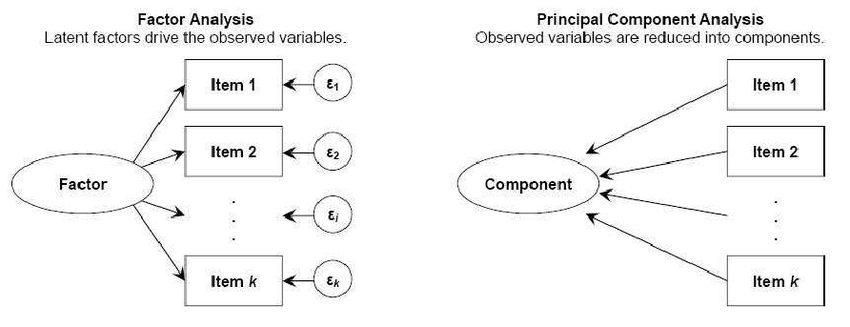15.1 Introduction
This intro comes from A gentle non-technical introduction to factor analysis
No attempt will be made to present a comprehensive treatment of this subject. For more detail see the references mentioned in PMA6 Chapter 15.2 and the links in the Additional Resources section for more information.
15.1.1 Latent Constructs
Latent variables are ones that cannot be measured directly; e.g. Depression, Anxiety, Mathematical ability. They drive how we would respond to various tasks and questions that can be measured; vocabulary, arithmetic, statistical reasoning.
Factor Analysis aims to
- Generalize of principal components analysis
- Explain interrelationships among a set of variables
- Where we select a small number of factors to convey essential information
- Can perform additional analyses to improve interpretation
15.1.2 Comparison with PCA
- Similar in that no dependent variable
- PCA:
- Select a number of components that explain as much of the total variance as possible.
- FA: Factors selected mainly to explain the interrelationships among the original variables.
- Ideally, the number of factors expected is known in advance.
- Major emphasis is placed on obtaining easily understandable factors that convey the essential information contained in the original set of variables.
- Mirror image of PCA
- Each PC is expressed as a linear combination of X’s
- Each \(X\) is expressed as a linear combination of Factors
15.1.3 EFA vs CFA
Exploratory Factor Analysis
- Explore the possible underlying factor structure of a set of observed variables
- Does not impose a preconceived structure on the outcome.
Confirmatory Factor Analysis
- Verifies the theoretical factor structure of a set of observed variables
- Test the relationship between observed variables and theoretical underlying latent constructs
- Variable groupings are determined ahead of time.
